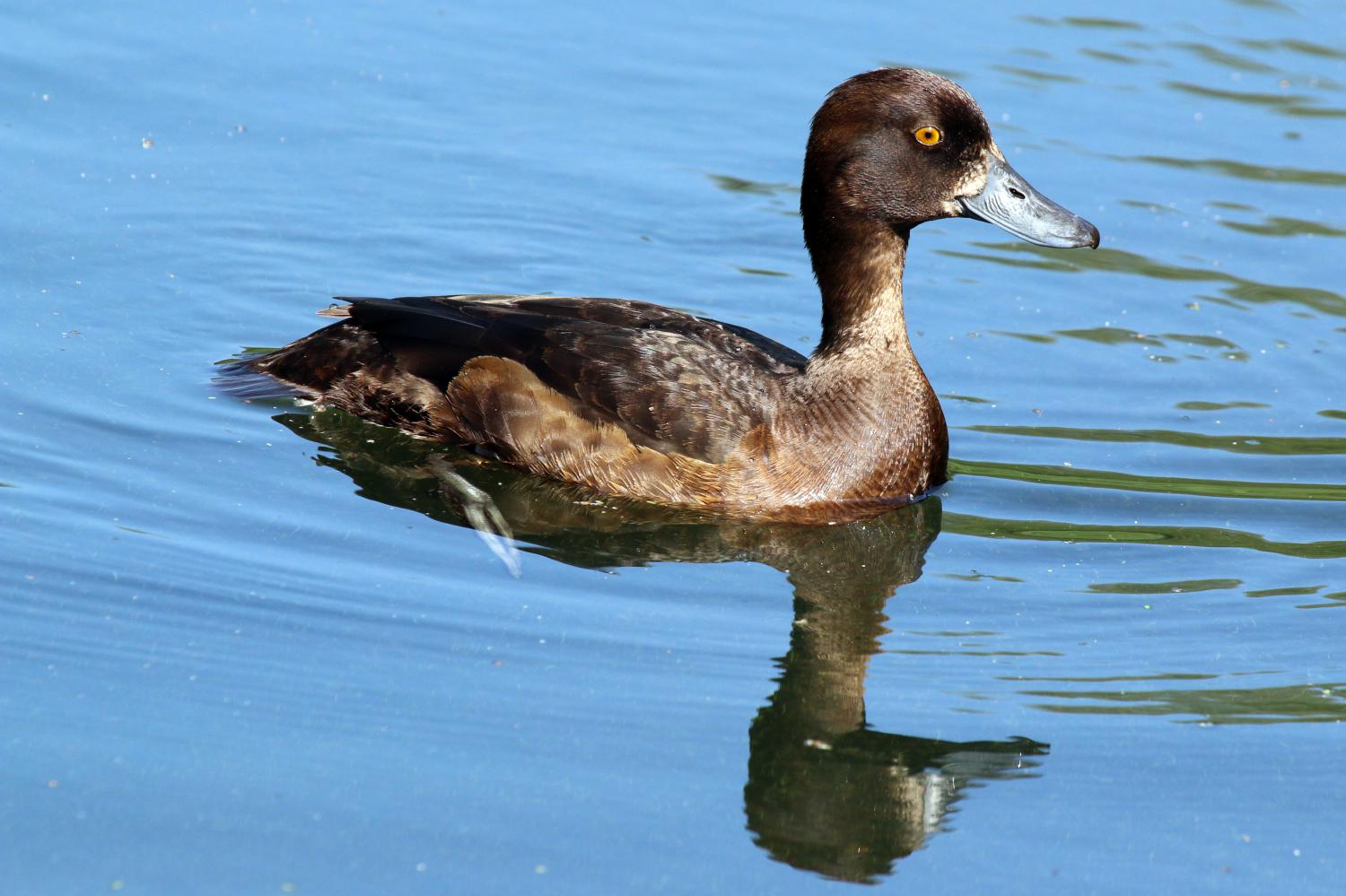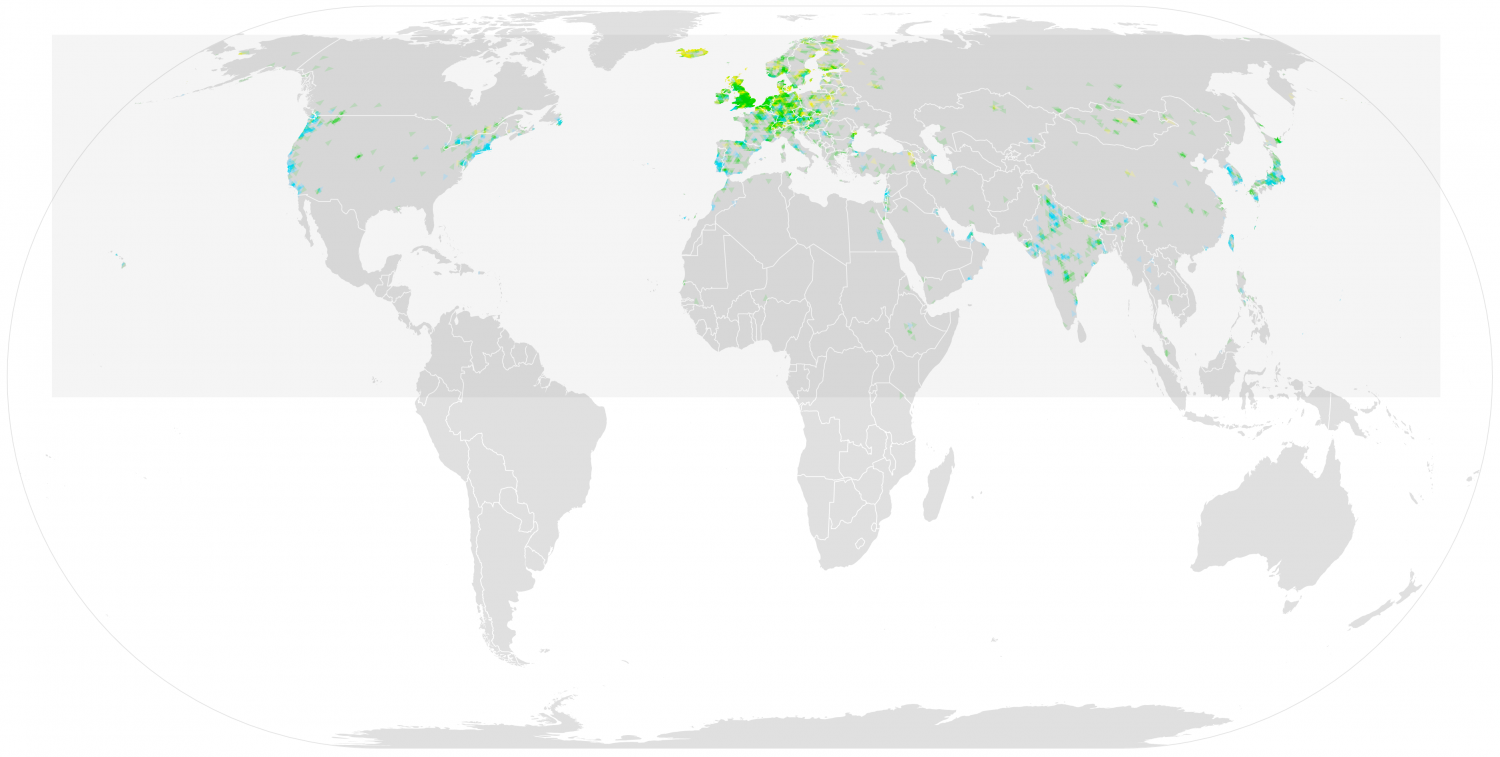Species of Thailand
Tufted duck
Aythya fuligula
Carolus Linnaeus, 1758
In Thai: เป็ดเปีย
The tufted duck (Aythya fuligula) is a small diving duck with a population of close to one million birds, found in northern Eurasia. The scientific name is derived from Ancient Greek aithuia an unidentified seabird mentioned by authors including Hesychius and Aristotle, and Latin, fuligo "soot" and gula "throat".
Description
The adult male is all black except for white flanks and a blue-grey bill with gold-yellow eyes, along with a thin crest on the back of its head. It has an obvious head tuft that gives the species its name. The adult female is brown with paler flanks, and is more easily confused with other diving ducks. In particular, some have white around the bill base which resembles the scaup species, although the white is never as extensive as in those ducks. The females' call is a harsh, growling "karr", mostly given in flight. The males are mostly silent but they make whistles during courtship based on a simple "wit-oo".
The only duck which is at all similar is the drake greater scaup which, however, has no tuft and a different call.
The tufted duck is one of the species to which the Agreement on the Conservation of African-Eurasian Migratory Waterbirds (AEWA) applies.
Distribution
The tufted duck breeds throughout temperate and northern Eurasia. It occasionally can be found as a winter visitor along both coasts of the United States and Canada. It is believed to have expanded its traditional range with the increased availability of open water due to gravel extraction, and the spread of freshwater mussels, a favourite food. These ducks are migratory in most of their range, and overwinter in the milder south and west of Europe, southern Asia and all year in the British Isles. One individual has been reported as far south as Melbourne, Australia. They form large flocks on open water in winter.
Habitat
Their breeding habitat is close to marshes and lakes with plenty of vegetation to conceal the nest. They are also found on coastal lagoons, shorelines and sheltered ponds.
Food
These birds feed mainly by diving, but they will sometimes upend from the surface. They eat molluscs, aquatic insects and some plants and sometimes feed at night.
This article uses material from Wikipedia released under the Creative Commons Attribution-Share-Alike Licence 3.0. Eventual photos shown in this page may or may not be from Wikipedia, please see the license details for photos in photo by-lines.
Category / Seasonal Status
Wiki listed status (concerning Thai population): Rare winter visitor
BCST Category: Recorded in an apparently wild state within the last 50 years
BCST Seasonal status: Non-breeding visitor
Scientific classification
- Kingdom
- Animalia
- Phylum
- Chordata
- Class
- Aves
- Order
- Anseriformes
- Family
- Anatidae
- Genus
- Aythya
- Species
- Aythya fuligula
Common names
- Thai: เป็ดเปีย
Conservation status

Least Concern (IUCN3.1)
Photos
Please help us review the bird photos if wrong ones are used. We can be reached via our contact us page.
Range Map

- Bang Len District, Nakhon Pathom
- Bueng Boraped Non-Hunting Area
- Chiang Saen District, Chiang Rai
- Mae Chan District, Chiang Rai
- Mueang Chiang Mai District, Chiang Mai
- Mueang Pattani District, Pattani
- Nong Bong Khai Non-Hunting Area
- Sathing Phra District, Songkhla




